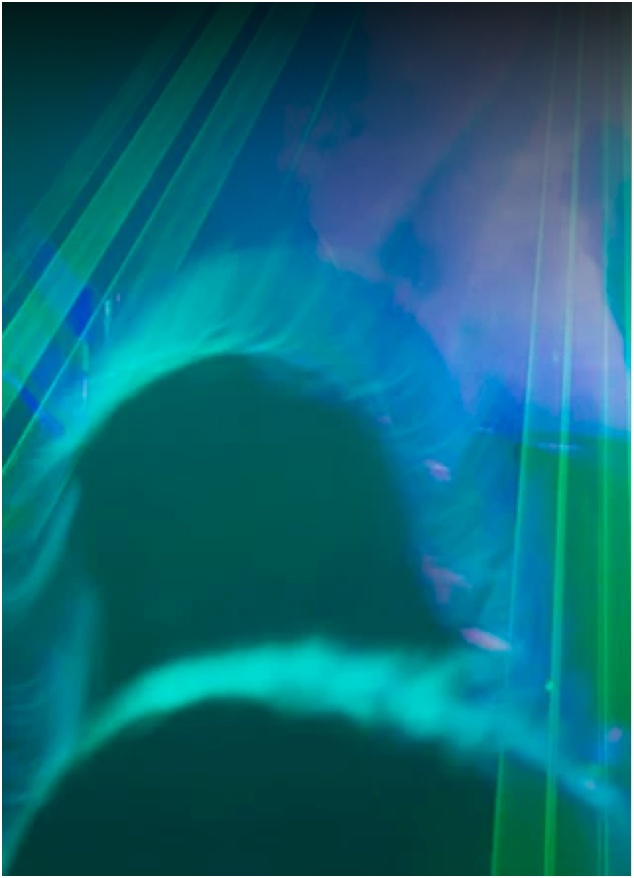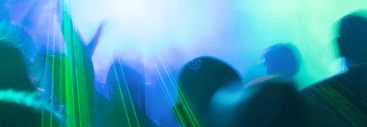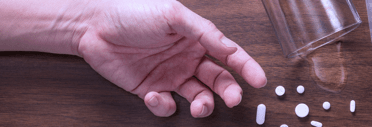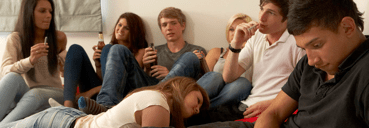Whether they are called party drugs, club drugs, or rave drugs, the substances and intoxicants that teens take when they are dancing the night away are downright dangerous. A rave is an often-illegal party or gathering, usually outdoors, that involves dancing and the usage of rave drugs until the sun rises. Club drugs refer to drugs used at the late night and after-hours nightclubs where young people go to dance and drink.
If you have a teenager and you are worried about party drugs, you have every right to have such feelings. Party drugs have a long history of being the cause of teen overdoses and death. The danger is real. Common party drugs in the club scene and at rave-like gatherings include, but are not limited to, Ecstasy or MDMA (often referred to today as Molly in the popular culture), GHB, Ketamine, and Rohypnol.
White club-going young adults were found to be more likely to use any illegal drug than their Black, Latino, and Asian peers.
Party Drugs And Teenage Temptation
If these party drugs sound like a foreign language to you as a parent, you are not alone. Many of these club drugs and rave drugs are not well-known outside of those particular party drug scenes. Each of the most popular party drugs will be examined and explained in detail below.
However, although these drugs sound like a foreign language to parents, they are well-known realities to many teens. Indeed, these dance scenes and those party drugs are magnets to teenagers, drawing them into dangerous environments and encounters. Suddenly, the teen becomes like a person drowning in quicksand. The more teens try to fight these temptations, the faster many of them are attracted to the idea of trying them out just one time.
With party drugs, however, just one time can be the fatal last time. Physiologically, party drugs have a long track record of causing cardiovascular, nervous system, and respiratory distress. Since these party drugs are produced illegally, it is extremely difficult, if not impossible, to predict their strength or to know whether they contain poisonous ingredients. Thus, party drugs can pose serious risks to the health and safety of teenagers. At raves and nightclubs, teens have overheated with party drugs in their systems, leading to hospitalizations and even death.
Many of these strange intoxicants are as dangerous or even more dangerous than heroin or cocaine. Indeed, just because they are not as well-known as these more infamous drugs does not lessen their danger in any degree. A person diving into the ocean for the first time may have never even heard of a shark, but that doesn’t mean they are not in danger if they end up swimming in shark-infested waters.
Unlike many other drug categories like opioids or benzodiazepines, club drugs are a “category of convenience.” Although club drugs have vastly different chemical properties, usages, and even effects, these party drugs are grouped together for a different reason. As opposed to their chemical makeup or origin, they are seen as a category on account of the specific locations where they are consumed and where a teenager goes while under the influence of these party drugs.
Club drugs often are called “designer drugs” as well since they tend to be synthesized in illegal chemical labs and designed by outlaw chemists. As a result, a teen never knows exactly what they are taking when they take a party drug that is sold to them at a rave or on the street in front of a club. It’s important to note that all the drugs designated here as party drugs are controlled substances listed in the control schedules maintained by the United States Drug Enforcement Agency (DEA).
Why Do Teens Take Party Drugs?
Beyond peer pressure, teens often take club drugs or rave drugs because they believe the effects of these party drugs will enhance their experience. They want the pulsating lights, brightly colored image projections, and powerful sound systems to be intensified. In other words, these kids want to be blown away; they dangerously believe party drugs are the key.
Dancers use club drugs and rave drugs for their stimulating properties both within and without. They want The teenagers using party drugs not only want to have their senses intensified, but also their energy intensified. They long for the enhanced power to stay up all night long dancing and partying.
At the same time, club drug users also take the drugs to “enhance social intimacy” during the dance club experience and increase libido. The popularity of many club drugs stem from their ability to induce euphoria, lower sexual inhibitions, and create a wild feeling of intoxication. Combined with overall sensory intensification that often leads to hallucinations and unusual perception effects, a teen on club drugs is opening the door to adult predators and criminal elements.
Hence, many club drugs are used as Roofies, particularly Rohypnol as the original source of this slang terminology. Known as date rape drugs or predator drugs, Roofies are an incapacitating agent which, when administered to another human being, incapacitates their senses and renders them vulnerable to a drug and facilitating sexual assault, including rape. Many club drugs and rave drugs can be used as Roofies even when taken in what are considered normal party drug doses. For example, in one 2002 survey of 53 women who used Rohypnol recreationally, 10% said they were physically or sexually assaulted while under its influence.
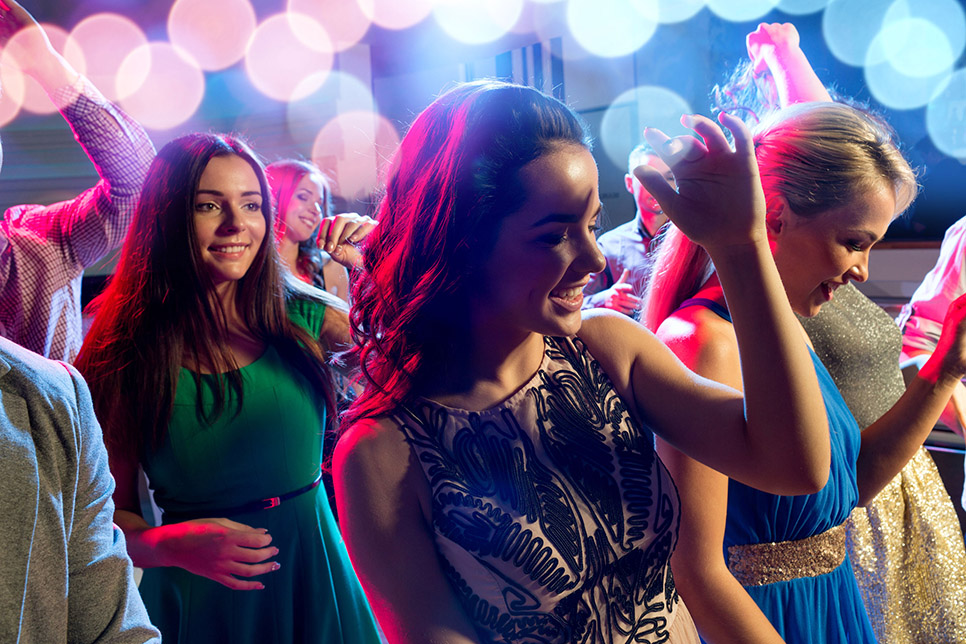
Short-Term Negative Effects of Party Drugs
All club drugs, including Rohypnol, have similar short-term effects that open the door to a teenager being abused by predators. Many of these negative short-term effects are considered positives by the teenagers when intoxicated. Others are negatives no matter how high a young person might be. Without question, however, they are all dangerous and should be avoided.
The short-term negative effects of most party drugs include:
- Dizziness
- Confusion
- Slurred speech or problems speaking
- Nausea
- Headaches
- Impaired mental functioning and judgment
- Impaired limb control, loss of coordination
- Chills or Sweating
Club drugs also can cause a teenager to dissociate from their environment and their body. This dissociative state often allows a teenager to stay awake and continue dancing for several hours without feeling fatigued.
However, such a party drug-induced state also accentuates carelessness, leading to a profound loss of inhibition and a skewed sense of time. The combination of these adverse effects leads to an array of poor decisions and potentially deadly risk taking.
Given this array of negative effects, it’s not surprising that party drugs and date rape go hand-in-hand. In light of such adversity, you would think teenagers would avoid club drugs. However, this is not the case. In truth, teenagers not only seek party drugs, but mix them as well.
Roofies are the accepted slang for many club drugs, particularly the benzodiazepine Rohypnol. This party drugs is often used to commit sexual assault and date rape. The origin of the term Roofies is a shortening and alteration of Rohypnol, the trademark name for the drug. Roofies often are combined with other party drugs to take advantage of unsuspecting victims.
Since most club drugs are colorless, tasteless and odorless, they can be slipped into drinks and used to intoxicate or sedate victims without their knowledge. When club drugs or rave drugs are administered in this fashion, the immediate effects can overwhelm an unsuspecting young person. Thus, they often are taken advantage of by predatory strangers and even so-called friends.
Indeed, the statistics about club drugs and Roofies are frightening but important for a parent to know. Before going into a description of the individual drugs, you need to know the statistics and the party drug challenges being faced so you can protect your teen.
Statistics About Party Drugs and Club Drugs
Beyond highlighting the dangers, these statistics show how very common club drug usage has become in the 21st century. If 35% of high school seniors easily can access these drugs, something is very wrong.
628,000
An estimated 628,000 individuals aged 12 or older are current (past month) users of Ecstasy (MDMA or Molly)
35%
35.1% of 12th graders reported that MDMA was “fairly easy” or “very easy” to obtain
22,000
Over 22,000 Emergency Department visits involved Ecstasy
12 million
In the United States, more than 12 million people have tried Ecstasy
70%
Club-going young adults report drug use at high rates: 70% report lifetime illicit drug use and 22% report recent club drug use
74%
People between the ages of 12 and 25 years of age accounted for 74 percent of Ketamine-related emergency room visits
Before detailing ways to help your teen deal with party drugs, let’s take an inside look at the different types of rave drugs and club drugs. By understanding what they are, you will see that preventative and potential treatment steps need to be taken.
About Ecstasy
Ecstasy is the popular street name for MDMA, an acronym for the drug’s official chemical name 3,4-methylenedioxymethamphetamine. As a synthetic, psychoactive drug chemically similar to the stimulant methamphetamine, Ecstasy is either taken orally in tablet or capsule form or snorted in powder form.
The effects of Ecstasy last approximately 3 to 6 hours. Although the average reported dose is one to two tablets, many users, particularly in clubs and at raves, take a second dose of the drug as the effects begin to fade. Indeed, Ecstasy triggers a release of the neurotransmitters dopamine and serotonin in the brain. As a result, in lower doses, Ecstasy can generate feelings of pleasure, closeness to others, energy, and confidence.
Molly is the latest slang for Ecstasy, and this nickname has become big in the popular culture. Indeed, from Miley Cyrus to Kanye West, many of the favorite pop stars of teenagers are referencing the party drug. Slang for “molecular,” Molly is a reference to the supposedly “pure” crystalline powder form of MDMA.
The Toxic Adulteration of Molly
In truth, the examples of Molly sold on the streets as a party drug or in a nightclub as a club drug frequently turn out to be adulterated with other drugs like bath salts, crystal methamphetamine, and toxic chemicals. According to an independent laboratory, among 250 samples of drugs tested in 2014 that were sold as Molly, 40 samples contained MDMA with adulterants, and 124 contained no MDMA at all. Hence, the adulterants in the drugs teens buy as Ecstasy can be truly dangerous.
Beyond the threat of potential adulterants, MDMA is a dangerous drug on its own.

“Many young people believe that MDMA is a new safe drug. But MDMA is not new to the scientific community, as many laboratories began investigating this drug in the 1980s, and the picture emerging from their efforts is of a drug that is far from benign. For example, MDMA can cause a dangerous increase in body temperature that can lead to kidney failure. MDMA can also increase heart rate, blood pressure, and heart wall stress.”
— Dr. Nora Volkow, Director of the National Institute on Drug Abuse
At both raves and nightclub, many healthy teens have experienced severe health emergencies from taking party drugs like MDMA. Moreover, some recent studies show that long-term MDMA users suffer from cognitive deficits, including serious memory loss.
Given the risks involved with taking Ecstasy, parents need to protect their teens from this tempting, yet highly dangerous party drug.
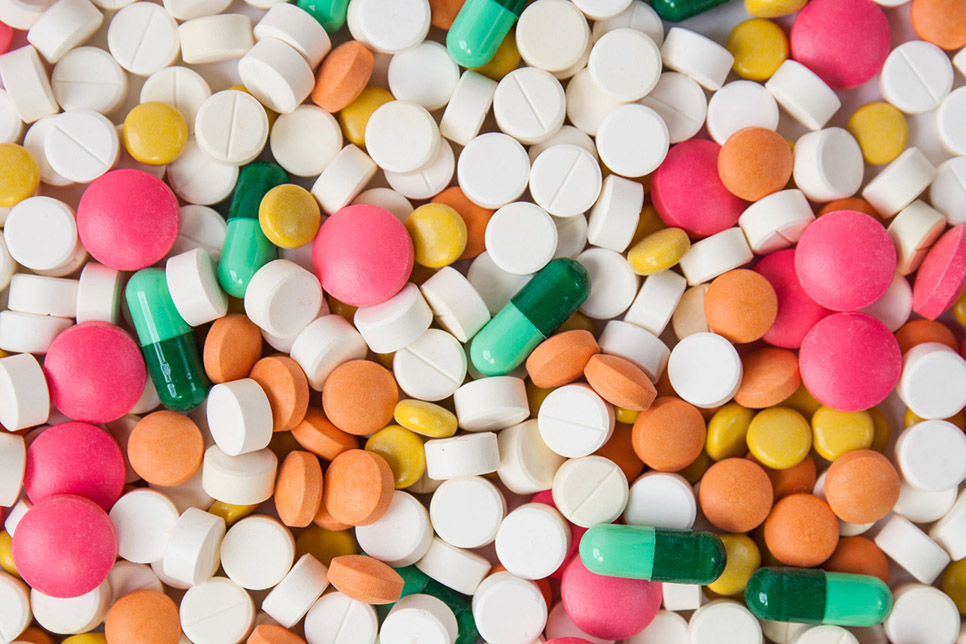
About Rohypnol
A benzodiazepine tranquilizer, Rohypnol is the brand name for a drug called Flunitrazepam. Very powerful, Rohypnol is about ten times more potent than Valium. Nicknamed Roofies for their use in date rapes and sexual assaults, Rohypnol is extremely affordable, usually costing less than five dollars per tablet. Although sold in pill form, Rohypnol is usually taken by dissolving it in liquid and drinking it.
Unlike the bluish tint of the pharmaceutical drug, street versions of the drug have no color, smell, or taste when they’re dissolved in liquids. Once a Roofie is taken, a user may experience lack of memory, impaired judgment, dizziness, and periods of blackout. Rohypnol users often describe the effects of the party drug as “paralyzing.”
As a tranquilizing agent that can overwhelm an unsuspecting teenager, sedation begins in about 30 minutes, peaks within 2 hours and lasts for about 8 hours. The adverse effects of the drug may continue for 12 hours or more. In other words, the Rohypnol hangover is vicious.
Given the obvious dangers of Rohypnol, the pharmaceutical drug was never marketed in the United States. However, Rohypnol is sold in Europe and Latin America as a sleeping pill. Every version of Rohypnol available as a party drug in the U.S., whether in the official foreign tablet form or made by an outlaw street chemist, is illegal. Hence, the law imposes a penalty of up to 20 years in prison for the importation and distribution of 1 gram or more of Rohypnol. Indeed, even the simple possession of Roofies in the United States carries with it a standard 3-year prison sentence.
Can you imagine Rohypnol being slipped as a Roofie into the drink of your teenager at a club? At raves, Rohypnol is mixed in with water that often is offered to thirsty teens on the dance floor. When it comes to such environments, predators abound. Indeed, teens need to be educated about Rohypnol, so they know how to avoid this maliciously virulent club drug.
Teenagers and young adults, primarily individuals aged 13 to 30, are the principal users of Rohypnol.
About Ketamine
Known as Special K and Cat Valium, Ketamine is a club or party drug that is primarily abused for its hallucinogenic and euphoric effects. Ketamine users may experience a sense of disassociation, feeling as though the mind is separated from the body. On account of the party drug’s ability to cause confusion and amnesia, Ketamine has been used as a date rape drug to commit sexual assault. Often, the drug is combined with Rohypnol.
Since Ketamine was designed solely for medical purposes, there is no safe dosage when used as a party drug. Legally used by veterinary technicians as an anesthetic for animals and as a horse tranquilizer, ketamine produces hallucinogenic and dissociative effects similar to PCP or Angel Dust. Hence, ketamine often is obtained by drug dealers and users stealing from veterinary clinics. Also, much of the ketamine diverted for nonmedical use and abuse is shipped illegally from China and India.
Hard to detect, Ketamine is sold as either a colorless, odorless liquid or as a white or off-white powder. Thus, Ketamine is used in a multitude of ways. Indeed, the party drug can be smoked, snorted or injected. In either its powder or liquid forms, ketamine is mixed with alcoholic beverages or added to marijuana or tobacco. In terms of other routes of administration, as a powder, ketamine also can be snorted or pressed into tablets. In the pharmaceutical liquid form, ketamine is injected intramuscularly.
The Dangers of Ketamine
When ketamine is used as a party drug or club drug, the dosages greatly vary in strength, often leading to unintentional overdose. In large doses, ketamine causes a deeply detached, hallucinogenic state that virtually paralyzes the user. Known as a “K-hole,” this state makes it difficult for the user to move or talk. When in such a state, teenagers can be taken advantage of by sexual predators or easily robbed.
Moreover, as with all psychotropic drugs, the tone of the hallucination depends on the user’s state of mind. Hence, if the user is unhappy or anxious, the hallucinations are likely to be very unpleasant. Large doses may also cause respiratory depression, particularly when mixed with alcohol, and this can prove deadly. Potential negative side effects of ketamine overdose include coma, respiratory failure, and death.
Indeed, does it make sense for a teenager to be taking a horse tranquilizer to have fun? Without medical supervision, the risks in experimenting with Ketamine are extreme. Hence, many teens that have fallen into the “K-hole” have experienced psychotic breaks and ended up in mental wards. Moreover, such a disaster more likely will happen to a first-time user. Given such dangers, why are so many teenagers playing with the loaded gun of these party drugs like ketamine?
About GHB
GHB is an acronym for the Gamma Hydroxybutyrate, the chemical name of the hard-to-obtain pharmaceutical drug called Ketamine. Often referred to as Liquid Ecstasy, the effects of GHB are like a cross between MDMA and alcohol. At a low dosage, a GHB user feels more sociable and less inhibited. Since GHB is rarely prescribed, the drug is now largely manufactured illegally by outlaw chemists. Hence, GHB is highly dangerous.
Indeed, the power of GHB dosages can vary to a great extent. Moreover, since GHB prepared as an odorless and tasteless liquid, it often is used as a date rape drug.
Swallowed as a liquid, GHB is quickly absorbed by the body, and the party drug’s effects come on quickly. Thus, the power of the drug peaks in 20-60 minutes. Even a slightly higher dose of GHB will make a teenager feel sick. The sudden adverse effects include dizziness, nausea, vomiting, drowsiness, amnesia and vertigo. At higher doses, the person may experience loss of consciousness, seizures, depressed breathing, a lower body temperature, coma, and even death.
Moreover, teens that take GHB as a party drug or club drug do not realize that withdrawal symptoms are common. Indeed, GHB is moderately physically and psychologically addictive. Thus, the frequent use of GHB can cause withdrawal symptoms like alcohol or benzodiazepines. Such symptoms seem to depend on the dosage and the length of time the drug was abused.
However, even light users of GHB often experience insomnia, anxiety, tremors, sweating, and psychotic thoughts. Heavy use of GHB as a party drug can cause severe withdrawal symptoms like delirium, psychosis, and violent hallucinations.
The dangers of GHB reflect the dangers of all the party drugs. Although club drugs and rave drugs seem like fun at the moment, the consequences can have profoundly negative long-term ramifications. As a liquid that is easily mixed with soda or flavored drinks, consuming GHB seems like no big deal for a teenager. Given the dangers, parents need to take proactive steps to protect their teens from such a casually deadly club drug.
Women between the ages of 16-24 are four times more likely to be unwillingly exposed to GHB than any other age group.

Protecting Teenagers from Party Drugs
Teenagers need to be protected from party drugs. Hence, educating your teen about the threat of club drugs and rave drugs is a smart step for a parent to take. Talk with your children about how to avoid these party drugs and what not to do at a club or a rave.
For example, teenagers should follow these guidelines:
- Never accept drinks, food, or substances from other people, particularly strangers
- Any substance or drink accepted from a “friend” needs to be carefully examined, and questions need to be asked
- Do not drink or eat anything they did not open themselves
- Do not share drinks with strangers or use a communal bottle
- Keep any drinks in sight at all times and watch the drinks of friends
- Alert a manager, security person, or law official if you suspect someone is trying to give you or a friend a date rape drug
Know the Dangers of Club Drugs
Club drugs also can cause people to overheat. If a friend looks too hot or feels weak or sick, you should get them to a cool, quiet place as soon as you can. If the person is thirsty, you should give them a sports drink instead of water. If they vomit, lose consciousness, or have seizures, you should get medical help right away by calling 911.
Since club drugs can go by a lot of alternative or “secret” names, never take anything that you’ve never heard of before. If the name of a drug sounds bad or made up, it probably is. Do not take any prescription drugs that are not part of a prescription for a medical condition, and do not take a pill unless you know exactly what you are taking. (Shouldn’t they not take pills at all in the party setting?)
Indeed, when it comes to club drugs, rolling the dice can be fatal. The dangers of party drugs are without question. For example:
- Party drugs can damage the brain, impairing memory, judgment, and coordination
- Party drugs affect a teen’s self-control, leading to potential loss of consciousness and sexual assaults
- Party drugs are made by outlaw chemists in makeshift laboratories, making it impossible to know their strength or chemical composition
As a parent, you need to educate your teens about the dangers of club drugs. You need to make sure that teens:
- Know that it’s illegal to buy or sell club drugs
- Know that club drugs can be addictive
- Know that club drug abuse can lead to overdose, coma, and death
- Know that new dangerous club drugs appear all of the time
- Know the risks involved with mixing club drugs with alcohol, magnifying the adverse effects and increasing lethality
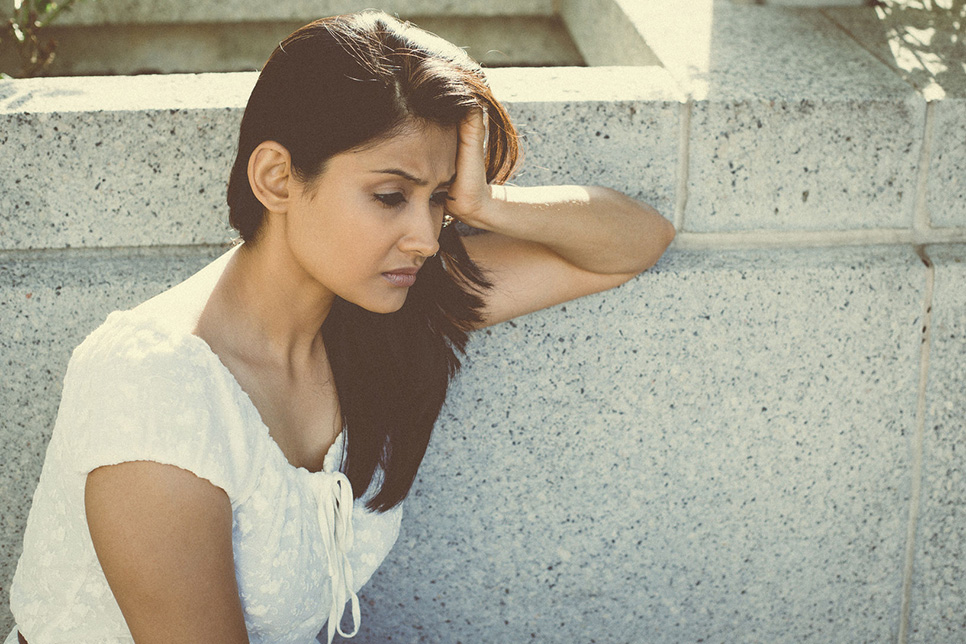
Treatment for the Abuse of Party Drugs
Party drugs are truly dangerous. As a parent, you need to halt club drug abuse as quickly as possible. By asking the spot-on questions, you will know when teen rehab is the right option for your teen.
Party drug abuse treatment should be designed to help your teenager. Such club drug recovery approaches need to be tailored to address your teen’s history and party drug abuse patterns, including the particular drug being used.
Moreover, your teen’s personal history, including related medical, psychiatric, and social challenges, need to be examined as well. A proper party drug abuse assessment provides crucial insight into what treatment options will work best.
When it comes to the abuse of party drugs, consulting with an addiction specialist is the right path to take. As a parent, accessing the experience and expertise of an addiction specialist will help you understand in detail your best options. In the end, the goal of treatment for teen party drug abuse is the safety and security of you, your teen, and your family.
When club drugs enter the picture, party time for any teenager should be over. Teen rehab leading to party drug abuse recovery is the critical next step.


